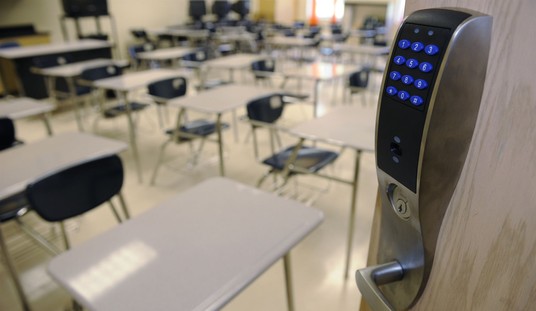Urban and industrial centers generate enormous quantities of wastes that can create major health problems unless they’re handled properly.
In 1900, New York City and other big metropolitan areas were plagued with millions of tons of horse urine, manure and carcasses. The carcasses went to rendering plants; the urine evaporated or washed into rivers; and some manure was dumped into the same rivers, along with garbage, industrial chemicals and untreated toilet discharges, creating vast stinking cesspools.
Most manure was left on streets, to be pulverized into dust that children and adults inhaled, with predicable health results.
Automobiles gradually replaced horses, eliminating equine pollution but creating new problems that catalytic converters later helped resolve. Meanwhile, new laws, wastewater treatment plants and industrial processes gradually eliminated effluents, cleaned up rivers, and helped fish and wildlife populations rebound. (I grew up on Wisconsin’s Fox River and watched as its ecosystems were reinvigorated.)
However, a legacy of dangerous chemical wastes remained in many soils and river sediments. Congress enacted the 1980 Comprehensive Environmental Response, Compensation and Liability Act (CERCLA) to implement requirements and incentives for cleaning up these historic hazards.
Recommended
The legislation is often called the Superfund law, because money collected under it from chemical and other companies is held in a supersized account for cleaning up large hazardous waste sites, when companies actually responsible for the contamination cannot be found or are no longer in business.
In many cases, companies responsible for all or part of the pollution step forward and voluntarily begin remediation. Superfund provisions encourage such behavior. However, other times multiple parties discharged hazardous substances over years or decades, no one initially knows exactly what or how much is there or where it came from, and only one company (or none) begins cleanup efforts.
CERCLA thus also says a company that voluntarily cleans up a Superfund site, instead of being compelled to do so by a legal judgment or settlement, can then seek recovery of costs from other parties, according to their respective shares of overall responsibility. This reflects basic principles:
Sound public policy should encourage companies to step forward, begin the cleanup process and later recoup costs they have incurred beyond their fair share. Government should find ways to save Superfund money for situations where responsible parties cannot be located or no longer exist.
This is what usually happens. But sometimes companies must think they’ve been transported to Alice’s Wonderland, where nothing makes sense and words mean whatever speakers choose them to mean.
That’s certainly the case with Georgia-Pacific Consumer Products LP. Georgia-Pacific purchased a Michigan papermill in 1990, decades after various mills had polluted 80 miles of the Kalamazoo River, three miles of Portage Creek, and adjacent waters. The extensive area was designated a Superfund site due to PCBs (polychlorinated biphenyls) that the pre-Georgia-Pacific paper recycling mill and other operations had discharged into the waterways from the mid-1950s to 1971.
G-P nevertheless voluntarily committed to start cleaning up the river bottoms, even though its predecessor had caused some of the pollution, and overall responsibilities had not been definitively established. That’s exactly the behavior Congress wanted to encourage. To date, Georgia-Pacific has spent many years and over $100 million removing the contaminants. But the cleanup still isn’t finished.
G-P could ultimately be compelled to spend millions more, even though later investigations determined that other companies were also responsible for the pollution and thus should share in the costs. So Georgia-Pacific went to court, seeking compensation for past expenditures and equitable sharing of future cleanup costs.
A federal district court found that Georgia-Pacific was actually responsible for only 40% of the contamination (and cleanup costs). Three other companies also shared the blame and therefore should also share in past and future costs: NCR (40%), International Paper (15%) and Weyerhaeuser (5%).
The three defendant companies appealed, claiming G-P had waited too long to petition for redress. Two appellate courts had heard similar appeals – and rendered totally different opinions about when the Superfund statute of limitations begins to run.
The First Circuit Court of Appeals found that the short three-year timeframe for recovering and sharing costs should be triggered only when a court renders a full judgment against a liable party for recovery of specific costs or damages. The Sixth Circuit ruled that the clock begins running the moment a court makes a “bare-bones” declaratory judgment: that someone is liable – even though others could also be, but the evidence is still insufficient to determine and apportion actual damages and cleanup costs.
This divergence of appellate court opinion presented a perfect opportunity for the US Supreme Court to step in, sensibly interpret the Superfund language, and affirm congressional intent to ensure that good corporate citizens aren’t punished for their good deeds and saddled with entire cleanup bills.
In fact, the Court just considered these issues, in Georgia-Pacific Consumer Products v. International Paper Company. G-P petitioned for certiorari, asking the court to hear the case on its merits.
Displaying Alice in Wonderland syndrome, the U.S. Department of Justice agreed that Georgia-Pacific was indeed victimized by an erroneous Sixth Circuit decision – but argued that the Supreme Court shouldn’t take the case, because it was somehow “a poor vehicle” for resolving the issues at bar.
This is upside-down logic. In fact, failure to grant certiorari would mean vital Superfund incentives will be turned upside-down, companies will be disincentivized from taking responsibility for initiating potentially very expensive hazardous waste cleanups, and the federal government (and taxpayers and consumers) will end up paying large sums for ongoing and future cleanups.
In passing the Superfund law, Congress understood that early good faith efforts to initiate and pay for cleanups could saddle companies with full removal and remediation costs, unless they: (a) know they will ultimately be able to identify all other responsible parties and compel them to pay their fair share of total cleanup costs; or (b) do the impossible – by finding those parties and bringing legal actions against them within three years.
The scope, extent and causes of environmental contamination – whether from pollution over decades or from a single event – are often not understood until after years of investigation, analysis and litigation. Determining all contributing factors and parties more often than not requires more than three years.
The February 2023 Norfolk Southern train derailment in Ohio is a perfect example. Complicated factors caused the disaster, multiple parties likely share responsibility for it, and its full nature, scope, cleanup requirements and costs will not be ascertained for years.
The contradictory Appeals Court rulings create a much more litigious environment for Superfund events like East Palestine. Years or decades of cleanup delays are the last thing impacted communities need.
The Supreme Court nevertheless denied certiorari. Many Court observers, myself included, believe it should have accepted the case and made these legal and policy principles clear for Georgia-Pacific and future Superfund parties. Now confusion will reign, cleanups will be delayed, and responsible corporations will balk at undertaking costly cleanups.
Let’s hope the Court grabs the next “vehicle” that arrives at its door.
Paul Driessen is senior policy advisor for the Committee For A Constructive Tomorrow (www.CFACT.org). He received his J.D. from the University of Denver College of Law.


